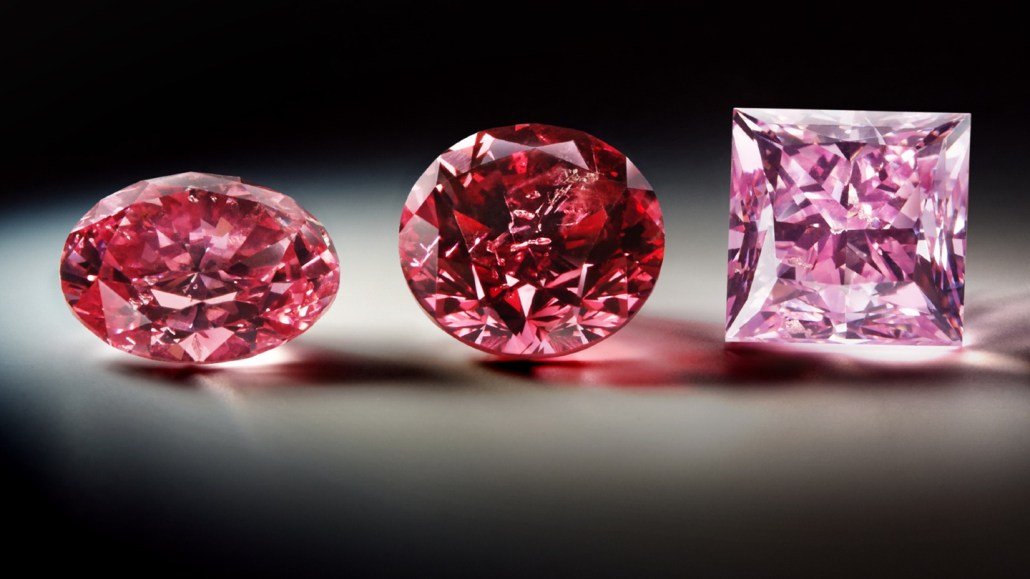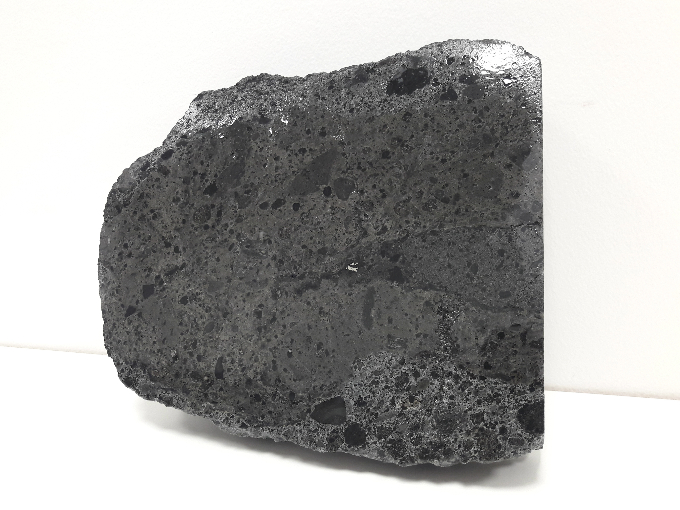To get diamonds perfect for Barbie, make and break a supercontinent
Most pink diamonds likely formed in tectonics that led to Nuna, the first supercontinent

Diamonds can get a rosy tint when powerful forces inside the Earth distort the gems’ internal arrangement of atoms. A continental collision may have provided the conditions to make this happen.
Murray Rayner, Rio Tinto
Share this:
- Share via email (Opens in new window) Email
- Click to share on Facebook (Opens in new window) Facebook
- Click to share on X (Opens in new window) X
- Click to share on Pinterest (Opens in new window) Pinterest
- Click to share on Reddit (Opens in new window) Reddit
- Share to Google Classroom (Opens in new window) Google Classroom
- Click to print (Opens in new window) Print
By Nikk Ogasa
Diamonds that would delight Barbie with their pink hue may be ancient relics of an epic continental breakup. That’s the finding of a new analysis. Those relics sit in what’s now Western Australia.
The Argyle mine there is the world’s largest source of natural diamonds — including more than 90 percent of all natural pink diamonds. Rocks bearing these gems likely formed some 1.3 billion years ago.
This mine lies along a rift zone. It once split a supercontinent called Nuna, which may have been Earth’s first true supercontinent. Argyle’s rosy gems may have formed in Nuna’s breakup.
The new finding suggests that other ancient rift zones might also host undiscovered troves of diamonds.
It started with graphite
On Earth’s surface, carbon atoms tend to form dull graphite. That’s the soft substance that makes up pencil lead. But down in the forge that is Earth’s upper mantle, extreme conditions mold carbon into hard, dense diamonds. These gemstones can escape their underground womb by hitching a ride in rapidly rising magma.
Near the surface, the molten material solidifies. This forms vertical tubes of volcanic rock known as kimberlite pipes. Most diamonds show up in these pipes.
But this classic story does not explain the Argyle mine or its pink diamonds.

Diamonds normally have no color. Hues can emerge, however, if the 3-D arrangement of a diamond’s carbon atoms changes. This alters the gem’s ability to reflect and transmit light. But to make a diamond blush, something more powerful than mere mantle conditions must contort the carbon’s sturdy atomic arrangement.
Another wrinkle lies in Argyle’s diamond-bearing pipes. They are not made of kimberlite. Their rock is a type known as lamproite. It’s generally thought to form at shallower depths, says Maya Kopylova. A geologist, she works at of the University of British Columbia in Vancouver. She was not involved in the new study.
The shallow origins of lamproite may explain why it usually lacks rich diamond loads. Argyle is an exception. Somehow, its lamproite raised treasures from the deep.
Continental breakup stones
Geologists have long puzzled over the oddities of Argyle’s formation.
Chemical analyses in the 1980s suggested its rock dated to 1.2 billion years ago. But that age was questionable. The mineral analyzed at the time may have been chemically altered by fluids in the Earth. That could have made this rock seem younger.
What’s more, the results did little to clear up Argyle’s mysterious origins, says Hugo Olierook. “Nothing was really happening [geologically] in Australia at the time.” A geologist in Perth, Australia, Olierook works at Curtin University.
He was part of a team that looked into other minerals at Argyle. They dated bits known as apatite and zircon. Unlike the minerals that had been studied earlier, these remained intact when they fell into molten lamproite. So they wouldn’t have been altered before they formed crystals and hardened. The researchers also analyzed a mineral in the lamproite that likely crystallized slightly later than the rest of the molten mix.
In each mineral, the team measured quantities of radioactive elements. These are forms of chemical elements that are unstable. They shed subatomic particles as they transform — decay — into lighter elements.
Measurements of these elements and their decay products revealed that Argyle’s lamproite formed some 1.3 billion years ago. That’s roughly 100 million years earlier than previously thought.
The researchers shared their findings September 19 in Nature Communications.
Nuna’s collision was the key
“When I first got the age, I thought, this doesn’t make any sense,” Olierook says. But while he was cycling home a few hours later, it clicked. He realized this had been “when the first supercontinent was breaking up.”
Argyle sits along the line where ancient continents were once stitched together. It marks where two plates once collided some 1.8 billion years ago. This formed part of Nuna. “It’s the smashing of those continents together, that’s what made those diamonds pink,” Olierook now suspects. The collision could have brought about the conditions that tweaked the diamonds’ atomic pattern.
Some 500 million years later, Nuna rifted apart. Now, those stitches split like a reopened wound. That may have opened paths through which lamproite magmas laden with rosy gems could rise up, Olierook says.
For decades, it has been thought that tectonic processes like rifting destroyed diamonds, Kopylova says. But this research supports a shift in thinking, she notes. Rifting “might be a trigger to get diamonds from deep in the mantle to the surface.”
Still, she adds, why Argyle’s lamproite pipes are the only ones known to contain minable quantities of diamonds remains a mystery. And Argyle is now running low. In late 2020, it stopped mining diamonds. It had exhausted all that weren’t too expensive to get out.
More treasure-laden lamproites may await discovery, Olierook says. Another Argyle may lie in the ruins of an ancient rift elsewhere. And perhaps, he says, it’s all dolled up with pink gems.







